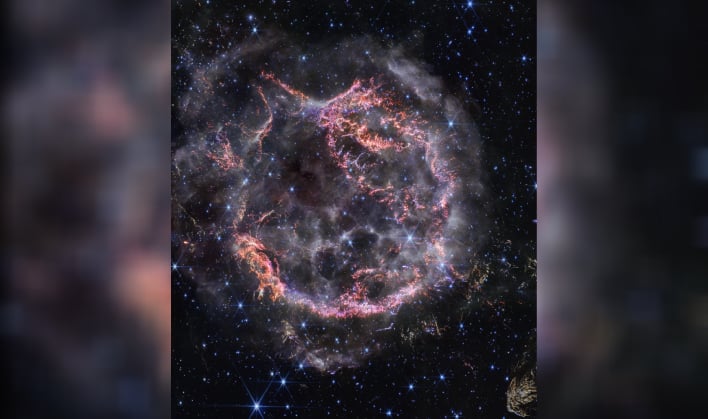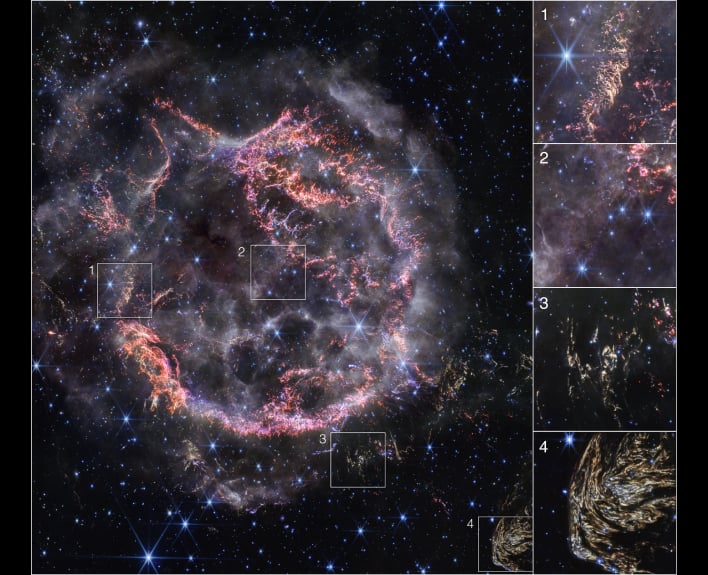JWST’s High-Def Image Of An Exploding Star Lights Up Space Like A Cosmic Christmas Tree

The image captured by the James Webb Space Telescope (JWST) depicts Cassiopeia A (Cas A) in wavelengths previously unobtainable by other observatories, such as the Chandra X-Ray Observatory and Hubble. It puts on display what NASA refers to as “intricate details of the expanding shell of material slamming into the gas shed by the star before it exploded.”
Webb previously captured Cas A with its Mid-Infrared Instrument (MIRI). However, many of the features that were highlighted in that image are not visible in the latest image captured with the space observatory’s Near-Infrared Camera (NIRCam). This has left astronomers scratching their heads as to why that is. However, there is plenty of new data throughout the image for them to learn from.
“With NIRCam’s resolution, we can now see how the dying star absolutely shattered when it exploded, leaving filaments akin to tiny shards of glass behind,” remarked Danny Milisavjevic of Purdue University and lead on the research team. “It’s really unbelievable after all these years studying Cas A to now resolve those details, which are providing us with transformational insight into how this star exploded.”

Another feature in the near-infrared image that has caught the attention of researchers is located at the bottom right corner. NASA refers to that area as “that, striated blob Baby Cas A,” because it looks like an “offspring of the main supernova.” What the researchers say it actually is, however, a light echo. This is where light from the star’s explosion reached and is warming dust, which now glows as it cools down.
Cas A is one of the most studied supernova remnants known to humans. As researchers and astronomers continue to receive new detailed images from JWST, they are hopeful they will unveil more of its secrets.

